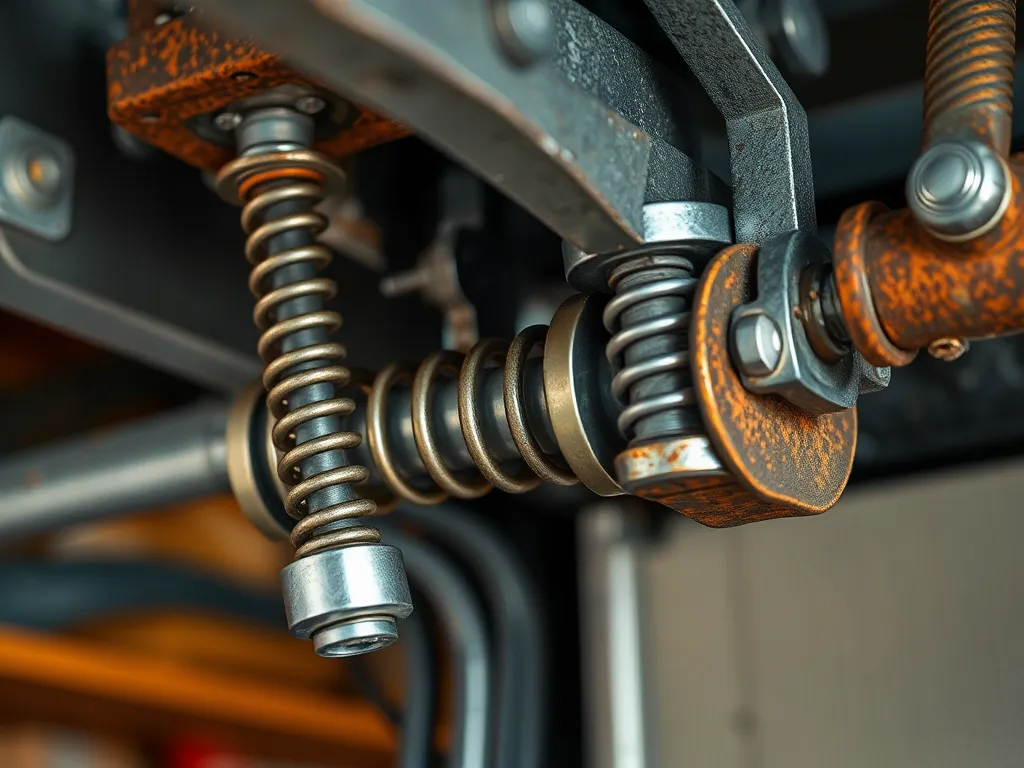Mastering Tension and Balance in Garage Doors for Safety

Understanding Tension and Balance in Garage Doors
Understanding Tension and Balance in Garage Doors is crucial for ensuring the smooth and safe operation of your garage door system. Garage doors are not merely a convenience; they provide security to your home and play a vital role in your daily routine. When these systems are well-tuned, they function seamlessly. Yet, issues related to tension and balance can lead to operational problems, safety hazards, and significant repair costs.
Understanding spring tension in garage doors can dramatically improve their performance and safety.
At the heart of any garage door system are the tension mechanics and balance principles that govern their functionality. Understanding Tension and Balance in Garage Doors involves recognizing how these two concepts work together to create a reliable system. Whether it's the springs that store potential energy or the balance that allows for smooth traversal, each component is vital for effective operation.
When garage doors are correctly balanced and tensioned, they operate quietly and do not strain the opener or the hinges. Understanding Tension and Balance in Garage Doors also means being aware of the signs that indicate an imbalance or tension issue. This knowledge empowers homeowners to address problems early, reducing the risk of more extensive repairs down the line.
Additionally, periodic maintenance focused on tension and balance is essential for extending the life of your garage door. Understanding Tension and Balance in Garage Doors should not be seen solely as a mechanical issue but as an integral part of home safety and functionality. Regular checks can prevent sudden failures that may occur at the most inconvenient times.
In summary, a thorough understanding of lifting mechanisms, tension regulation, and balance principles is vital for anyone who uses a garage door. By mastering these concepts and knowing how to maintain them, homeowners can ensure reliable performance and safety for years to come.
Achieving proper garage door balance is essential for smooth movement and longevity of your garage door system.
Tension Mechanisms in Garage Doors
There are two primary types of tension systems in garage doors: torsion springs and extension springs. Torsion springs are mounted above the garage door and offer a significant amount of lifting power, making them ideal for heavier doors. Extension springs, on the other hand, are located on either side of the door and stretch to provide lifting force. Understanding these types of tension systems is critical, as they require different maintenance and handling.
Effective weight distribution is crucial for preventing wear and tear on garage door components over time.
Springs play a pivotal role in tension regulation for garage doors. They counterbalance the weight of the door, allowing it to open and close smoothly. Properly tensioned springs absorb energy when the door is closed, then release it to assist in opening. Over time, springs can lose their tension or break, leading to operation issues. Understanding Tension and Balance in Garage Doors necessitates a keen eye on these components.
Signs of improper tension include difficulty in opening or closing the door, loud noises during operation, or the door appearing to be uneven. These are indicators that the tension system may need adjustment or replacement. Homeowners should regularly check these signs to maintain the effective performance of their garage door repair system.
Balance Principles in Garage Door Operation
The balance of a garage door affects its functionality in several ways. A correctly balanced door will stay in place when midway up, neither rising nor falling due to gravity. This balance impacts the overall wear and tear on the door and components, such as the opener, hinges, and tracks, promoting longevity and reducing repair costs.
Adjusting the balance of a garage door involves regulating the tension of the springs. To do this, homeowners may need to tighten or loosen the springs carefully, ensuring the door can operate smoothly. A well-balanced door requires less energy to open and close, therefore improving the efficiency of the garage door opener.
Imbalance in a garage door can pose serious safety risks as it can lead to the door falling suddenly or closing unexpectedly. An unbalanced door may also cause strain on the garage door opener, leading to potential failure. Thus, understanding tension and balance in garage doors is vital for ensuring safety and functionality.
Maintenance of Tension and Balance
Routine checks for tension and balance are essential for the long-term health of a garage door system. Homeowners should inspect the springs, cables, and other mechanical components every few months to ensure proper tension and alignment. This proactive maintenance can prevent potential issues and extend the life of the door.
Tools needed for garage door maintenance include a socket wrench, a pair of pliers, safety goggles, and a ladder. Having the right tools on hand ensures that homeowners can quickly address minor issues without needing to call in a professional for every small repair.
While some maintenance can be performed as a DIY project, it’s important to know when to call in a professional. If a homeowner is unsure about adjusting tension or has no experience with garage door systems, it is safer to seek help. Professionals have the expertise to perform adjustments safely and correctly, minimizing risks.
Safety Concerns Related to Tension and Balance
Common risks associated with faulty tension systems include sudden door closures, which can injure individuals or pets in the vicinity. Additionally, improperly adjusted springs can become dangerous projectiles if they break, posing potential injury to anyone nearby. Regular inspection of these systems helps mitigate such risks.
Balance issues in a garage door can lead to accidents, as an unbalanced door may open or close unexpectedly. Homeowners should be vigilant about observing the door's movement and seek repairs if something seems amiss. A well-balanced door is critical for a safe environment in and around the garage.
When selecting garage doors, consider built-in safety features such as auto-reverse mechanisms and safety sensors. These systems can help prevent accidents and ensure the door does not close when something is in its path. Understanding Tension and Balance in Garage Doors should include a commitment to safety.
Troubleshooting Tension and Balance Issues
Identifying tension-related problems begins with observing door operation. If the door is difficult to open or close, appears skewed, or produces unusual sounds, it may indicate tension issues. Homeowners should note these symptoms and conduct routine inspections to catch problems early.
To rebalance a garage door, first disconnect the opener and manually lift the door halfway. If it moves freely and stays in place, it's balanced. If not, you may need to adjust the tension on the springs. This process involves carefully loosening or tightening the springs, and it is advised to take precautions or consult a professional for best results.
Calling a professional is crucial when there are significant operational issues, when unknown variables are in play, or if there are safety concerns. Professionals possess the knowledge and tools necessary to handle garage door repairs effectively and can provide peace of mind for homeowners.
